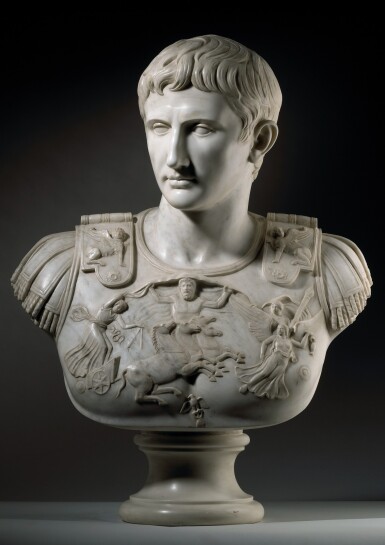European Art: Paintings & Sculpture
European Art: Paintings & Sculpture

ITALIAN, 19TH CENTURY, AFTER THE ANTIQUE | BUST OF THE PRIMA PORTA AUGUSTUS
Lot Closed
June 18, 01:43 PM GMT
Estimate
10,000 - 15,000 GBP
Lot Details
Description
ITALIAN, 19TH CENTURY
AFTER THE ANTIQUE
BUST OF THE PRIMA PORTA AUGUSTUS
white marble, on a white marble socle
81cm., 31⅞in. overall
To view Shipping Calculator, please click here
The discovery of a monumental marble statue of Augustus during excavations at the Villa of Livia at Prima Porta in 1863 caused a sensation. It was in this statue that the imperial might of ancient Rome seemed to be embodied, and the image inspired a new generation of Grand Tourists in the second half of the 19th century.
It is thought that the marble statue is dependent from a now-lost bronze original, which was erected during Augustus' lifetime. The marble is likely to have been commissioned by Augustus' son, the Emperor Tiberius, perhaps as a gift to his mother Livia, in whose home it was unearthed. The dating of the marble to the beginning of Tiberius' reign (circa 14-20 AD) is corroborated by the elaborate imagery of the Emperor's cuirass. As well as deities and allegorical scenes, the armour depicts the retrieval of Crassus' standards from the Parthians, an event in which the young Tiberius first proved his political prowess, presenting him as a worthy successor to Augustus. The present marble is a bust version of the iconic sculpture.
RELATED LITERATURE
P. Zanker, The Power of Images in the Age of Augustus, Ann Arbor, 1990; A. Panzetta, Nuovo dizionario degli scultori italiani dell'ottocento e del primo novecento, Turin, 2003, vol. 1, p. 104
